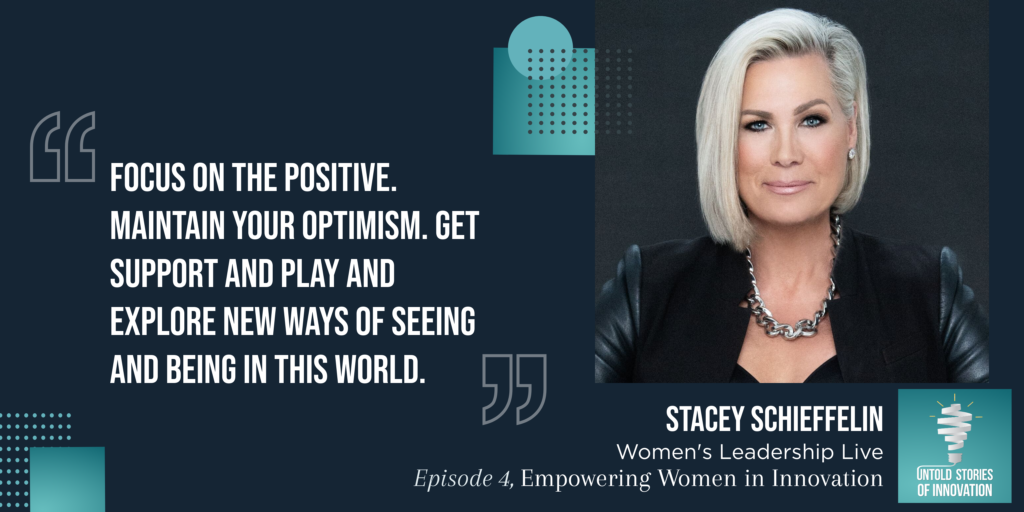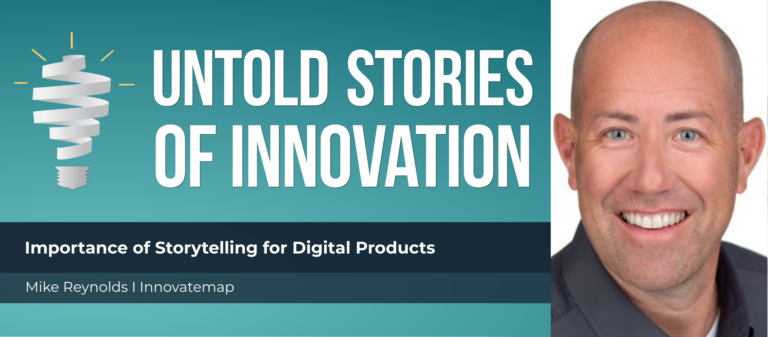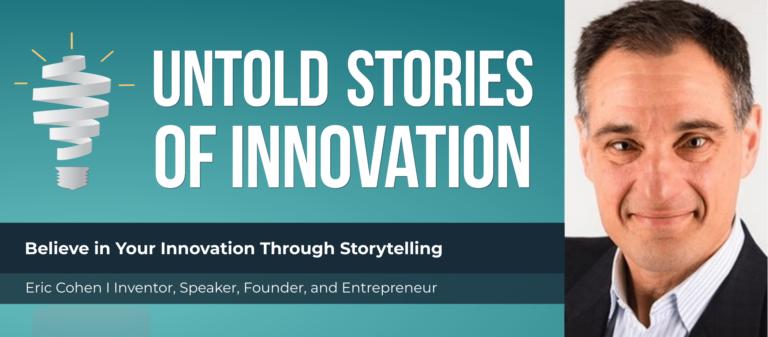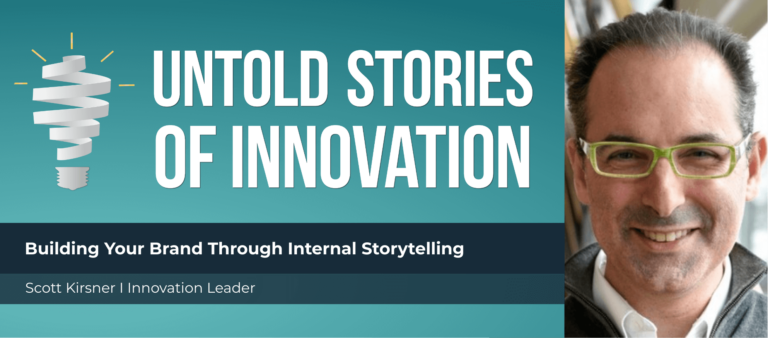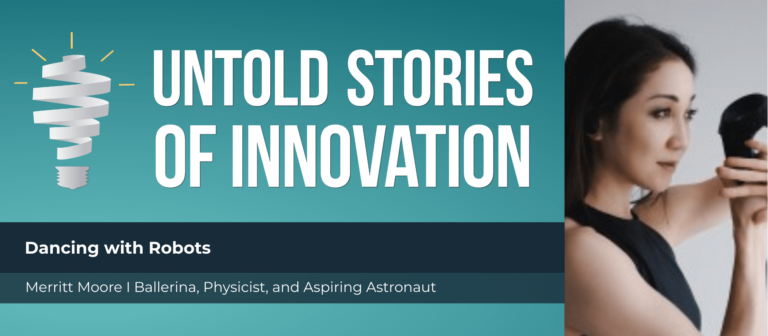Empowering Women in Innovation
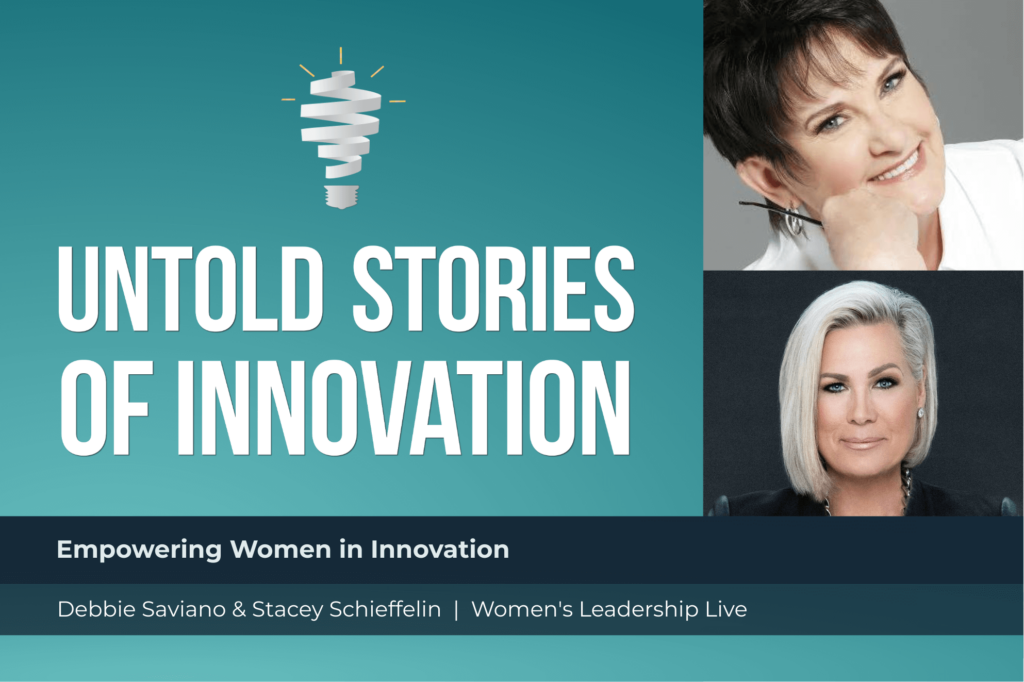
Empowering Women in Innovation - Untold Stories of Innovation
“Focus on the positive. Maintain your optimism. Get support and play and explore new ways of seeing and being in this world.” —Stacey Schieffelin
From today’s episode you’ll learn:
Why do stories matter to the innovation process? What values can be instilled in innovators who share stories? How do innovation leaders inspire creators to tell and share their success and failure stories?
We speak with Debbie Saviano and Stacey Schieffelin, the co-founders of Women’s Leadership LIVE. Supporting small business owners is at the heart of their work with Home Shopping Network, QVC, and Where Women Create. Together, they shared innovation insights that ranged from remaining vulnerable in content marketing to sharing stories of success and failures.
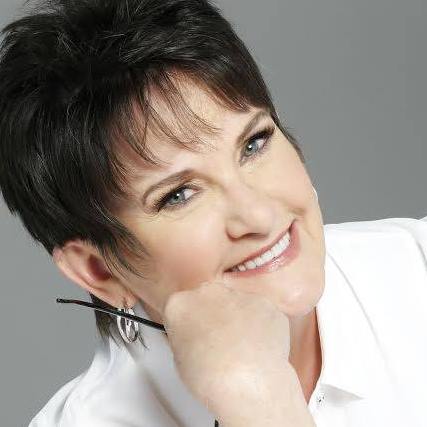
Debbie Saviano represents those who after a successful career, transition into something new and in her case it was Social Media. Debbie comes from the world of academia, serving as principal of five different campuses with students in pre-K to High School. As an administrator, Debbie was recognized as a leader who always put students first and was a champion for interdisciplinary education. Her passion for education and life-long learning is ever present as one of the three Founders of Women’s Leadership LIVE (WLL).

Stacey Schieffelin is a Co-Founder of Women’s Leadership LIVE, the Founder and Former CEO of ybf (your best friend) beauty, LLC, Models Prefer Beauty and is 1 of 6 HSN Star Entrepreneurs! She has engineered a 24-year record of success owning some of the greatest global cosmetic brands in direct sales on eight LIVE TV networks in twenty-eight countries.
This episode, Empowering Women in Innovation is powered by Wordsmith: An Online Writing Course for Busy Professionals. Professionals spend 40% of their workdays WRITING. Wordsmith empowers you to write more efficiently for greater impact and influence. With real-world case stories drawn from Untold’s work with innovative organizations around the globe and 25 downloadable cheat sheets that you can take with you to increase your confidence with writing and storytelling. Learn more at untoldcontent.com/writing-training-for-busy-professionals.
Katie [00:00:00] Our guests today are Debbie Saviano and Stacey Schieffelin. They are co-founders of Women’s Leadership LIVE. I am so grateful to have you here on the podcast and to share all of your incredible work with Home Shopping Network, QVC, Where Women Create, and your national tour as well this year. So thank you for being on the podcast.
Debbie [00:00:20] Thank you for having us.
Stacey [00:00:21] Our pleasure.
Katie [00:00:22] So tell us a little bit more about Women’s Leadership LIVE and what its mission is.
Debbie [00:00:28] So this is Debbie Saviano. I’ll go first. So to sum it up, we offer expert business training for committed entrepreneurs, primarily women. But as Stacey would tell you, we have 20 percent enlightened men and our goal is to always have them be the best in their categories of their industry, professional whatever. But—
Stacey [00:00:45] It’s our sixth year.
Debbie [00:00:47] Which is amazing.
Katie [00:00:49] Congratulations.
Debbie & Stacey [00:00:49] Thank you.
Debbie [00:00:50] And I came from a—my first career was in education. I was a school principal of five different campuses. K-12. And Linda joked yesterday that I couldn’t keep a job. They just moved me around for change and innovation, actually, ironically enough. We all came together six years ago. But my love, my passion, is social media and digital space because I think it brings us together on a global perspective, if you will. We can all be connected physically, digitally, and it enables us to do things we never could have done years ago. I’m happily married to my high school sweetheart, have two children, grown children and five granddaughters.
Katie [00:01:34] Five. All girls?
Debbie & Stacey [00:01:34] All girls.
Katie [00:01:35] Do they love—do they already understand that grandma is empowering women around the world?
Debbie [00:01:40] They do. They’re very, very proud of grandma. And then Stacey and I met like eight years ago.
Stacey [00:01:47] That’s correct.
Debbie [00:01:47] She hired me to do her social media because she was on TV. And so I came on to do that with her. And then as girlfriends do, we got introduced to each other and we started Women’s Leadership LIVE. Stacey, I’ll let you take it.
Stacey [00:02:00] Absolutely. Every day, as Debbie always will say, we’re life learners. And she truly is. She teaches me something about social media every day. I’m still learning, Katie. I’m telling you.
Katie [00:02:11] Yes. Aren’t we all? If you’re not a rapid learner—
Stacey [00:02:15] It’s like ever changing, right?
Katie [00:02:16] Yeah. Yes.
Stacey [00:02:18] So love that we have Women’s Leadership LIVE together and we have so many amazing women in our community. But I’ve been the founder of two beauty brands, YBF Beauty, Your Best Friend, and Model’s Prefer was my first brand. I was twelve years at QVC. Now twelve glorious years at HSN. Our networks are now under one brand called Qurate. QVC purchased HSN back in December of twenty nineteen. So now we’re one global brand. I’ve engineered twenty-four years of record success, proud to say, humbled everyday by it, being the number one global cosmetic brand now on eight networks in twenty-eight countries all live TV and we love the opportunity to be able to have so much reach. We reach about three hundred and eighty million women across the globe, and people are like, what’s that look like? I’m all, well, HSN is in the US. QVC and Ideal World are our networks in the U.K. So that’s England, Ireland, Scotland, Wales. Love, love, love. Yes. And the PSC group, they’re out of Canada. We’ve got TBSN. It’s our TV shopping network in Australia and New Zealand and then we’re on HSE24, that’s Home Shopping Europe. 24 in Italy, Germany and Austria. Citrus TV in Dubai with seven United Arab Emirates countries and Live Shopping now in Moscow and Russia. And I don’t know where we’ll go next. Wherever they call us.
Katie [00:03:44] That’s right.
Debbie [00:03:45] She can just take those off. She goes so often. She can just—
Stacey [00:03:48] Every week.
Debbie [00:03:49] Boom, boom, boom. All those stations.
Stacey [00:03:51] It’s very humbling. But what we found about women, Katie, is it doesn’t matter what culture or country we’re in, we all want to learn from one another. And that’s how we started Women’s Leadership LIVE, where we could help women take their brand, their products, and their service to the next level.
Katie [00:04:09] It’s incredible to me that both of you have had so much success in your individual careers and you’ve both established brands to great renown. And yet you’re making time to build into an organization that is truly founded upon the sole purpose of empowering others and being able to create mentorship relationships. What drives you to want to share your story in a mentoring fashion in that way?
Stacey [00:04:39] Go ahead Debbie.
Debbie & Stacey [00:04:39] We both get so excited.
Katie [00:04:42] I know anytime that three of us talk, we tend to giggle a lot.
Debbie [00:04:47] Exactly.
Stacey [00:04:47] And we learn something from you every time we talk to you, Katie.
Katie [00:04:49] Vise versa.
Stacey [00:04:51] You are such a pay it forward kind of gal, and we love seeing that because that’s the success that all our journeys have when we help and take one another by the hand, and not lead, but lift one another up. And you are a great component of that.
Debbie [00:05:04] Absolutely. A great role model.
Katie [00:05:06] Oh, my goodness.
Debbie [00:05:08] You asked the question, Katie. And to what Stacey’s point is you really do embody that, because we do what we do, because we both have daughters and I have granddaughters and we only walk this journey once when we both believe passionately that you should use your skills and your expertise and your experiences to help others. And so we want the world—all well, you know. [00:05:28] When you leave this world, when you’ve done this walk, you want to have left something behind that made a difference for people. And for us it’s women. And we just feel like it’s so important to use our passions and our background and our experiences to help others. And so we’re blessed to have the variety of experiences and backgrounds. And we bring all that together for one for one roadmap. If you will, to help women.
Stacey [00:05:53] Because none of us ever tell each other how to prepare ourselves for the self-doubt we have as business owners. Whether you’re in a corporate job or whether you’re an entrepreneur, there is a period in the quiet in the night, Debbie likes to say, that we all sit there and think about was my day fulfilling for myself and the people around me?
Katie [00:06:12] Yes. You know, one of the things I’ve been really excited to ask you both about is kind of along that line. What are some of the stories, especially if you sort of rewind a little bit and think about your early careers and your early moments of trying to test out your big ideas and get buy-in for them. What were some of the challenges you came up against, both internally inside your own mind and also externally as you as you worked to try to get other people behind you in supporting your big ideas?
Stacey [00:06:47] Mine was don’t ever let perfection be your barrier for action. Because we as women don’t think we can get really going until we know everything is perfect. Well, never is anything going to be perfect. If we stop—if we don’t start, we’ll just never get started. I always say people get overwhelmed, analysis paralysis. They analyze so much and sometimes just get stuck in their own way and never get out there. There’s plenty of days to think about all the good, the bad and the ugly. But having faith in yourself and that self-confidence and never doubting yourself and knowing that the people along your side, your mentors, your other women friends that you can ask—your peers—what do you think about my idea? Do you think it has merit? Don’t be afraid to let other people help you along this journey. We have a lot of experts that help Debbie and I every day, and we’re still learning every day and our experts learn from us. We heard a great thing the other day, Debbie, you want to explain that personal board.
Debbie [00:07:50] Your personal board of directors, which I’m sure you have, Katie. Which we need to add Katie to ours.
Stacey [00:07:55] Yes, we do.
Debbie [00:07:57] Where we have those women, because let’s face it, women, we can have the negative Nellies in our head more than—I think women are gifted with that. Whereas men, not so much. But we got that little thing on our shoulders, saying you can’t do it, you can’t do it. The ego, if you will. So we have to not listen to that. And then, when we have those moments—like say we have those moments of doubt or insecurity. Take five minutes to yourself. Take a breath, relax and say, you know what? What’s the worst that can happen? I’ve got my health. I’ve got my independence. Go for it. 50 percent chance they’re gonna say yes. And if they say no, ask why they said no.
Katie [00:08:34] Learn.
Debbie [00:08:34] Exactly. Learn from it and then go forward. But we’re very blessed. Stacey and I and when Linda’s with us. We really look toward what are our goals we want to accomplish and we figured out how we’re gonna get there. I think some of us probably age, but we go for it because we want to model that for other young women not to be hesitant. You might have a little bit of hesitancy, but as we say, stop, take a breath and go for.
Stacey [00:09:00] Yeah. Focus on the positive. Maintain your optimism. Get support and play and explore new ways of seeing and being in this world. The worst thing about it is sitting there just wishing you had a woulda, coulda or trying to go it alone and not learning how to delegate and you get stuck. We all need help. No one can do it on their own. We cannot control everything. Although we as women try, we need help from each other. So it’s all about, you know, latency. Don’t put it aside. Don’t get analysis paralysis. Get rid of that self-doubt. And the secret to success is being resilient.
Debbie [00:09:37] And I remember Erma Brombeck, who you may not know who she is. But, you know, Erma Brombeck is amazing.
Katie [00:09:43] Yeah, you know her? Oh, she’ll amazing.
Debbie [00:09:45] Just everything she did. And I remember reading one of her cards. And Stacey and I say this all of the time. You want to—when you end that life journey, you want to go sliding in, dirty, beat up, scarred and knowing you gave it all you had. Because the first thing is to sit there and think is, oh, my gosh, I wish I would have done that. We that would’ve been doubt. And that would’ve been horrible. Yeah. That’s not going to be us. Or you either, Katie.
Stacey [00:10:09] That’s not going to be us. We may fail a couple of times, but those are the things we learn the most from—is the things we failed at. Those were the most exciting moments that we turned around and made positive later.
Debbie [00:10:19] That we laugh about.
Stacey [00:10:19] Yeah, we laugh about it now. It was such a big thing then I was sure.
Katie [00:10:23] So it’s so instinctual to me anyway and I think for a lot of the women founders or entrepreneurs around me, too—you’re right. Get stuck in analysis. Get, you know, really want control over how we decide to make the next move or scale up. And it’s interesting. This year I have a theme for the year. Do you want to hear it?
Stacey [00:10:46] Share, share, share. We’re gonna write it down. Get your paper out, Debbie.
Katie [00:10:48] Because it speaks so exactly to what you’re talking about. And it’s momentum.
Stacey [00:10:54] Yes. Oh, my. I cannot even believe you talked about that.
Katie [00:10:59] Isn’t that an amazing—
Stacey [00:10:59] At church, last Sunday, that was the theme. Action and momentum.
Katie [00:11:05] Really?
Stacey [00:11:05] Yes, they talked about it.
Debbie [00:11:06] You are so smart.
Katie [00:11:06] Yeah. Follow the momentum, follow where it’s leading. And instead of trying to force things that you thought were going to work when you first concepted them and really pushing toward them and kind of fighting an uphill battle. Don’t do that. Just listen and observe and find and hear the momentum and then follow it and build upon it. Let it snowball.
Stacey [00:11:28] Oh, that was such a great advice. Okay, we got it. You are so—we learn from our Katie.
Katie [00:11:34] Vise versa. But you were the ones really saying it. It’s just another reminder to me that I can trust in that. And I don’t have to question every single tiny micro movement. So. Okay. Failure. Why is failure so hard? Why are we so afraid to talk about it?
Stacey [00:11:51] Well, sometimes we look at it as a reward. Loss or failure. Is it going to be—did I lose on my financial result?
Debbie [00:12:02] Or how people judge us.
Stacey [00:12:02] How do people judge us? Or could I have improved that employee engagement or higher retention rate? Did we fail at innovation? Were we not productive enough? What could we have improved with that customer service satisfaction? Did we fail our consumer? We always say. I think this thing for me this year, my best advice is never lower our standard ever. Product, service, or what we share with people.
Katie [00:12:30] I love that.
Stacey [00:12:30] Never lower our standard just because it may be a little bit more cost effective or maybe less time consuming. Just know that everything we put out 150 percent.
Debbie [00:12:41] And to that point, too—I also think, Katie, this is such a fascinating conversation because it truly is real. We’re just three women sitting here together around the table talking. But I think, too, and unfortunately, sometimes we’re obviously are own worst enemy, but also because—and this is the dark side of social, I always say, social to me is one of the best things we have. But it allows people to go on, unfortunately, and say unkind things never to be held accountable, never be asked to support it and say unkind things about others. Sometimes with no proof, no whatever. And people see that or read it. They don’t want that to happen to them. So they’re afraid to share and to be real. But we help each other so much more when we are real. And Stacey and I try really hard to do that in our community.
Stacey [00:13:29] Yes. Authentic.
Debbie [00:13:30] Exactly. Be authentic. Be transparent because we’re all in this together. And when we do that, we model for others that it’s a safe. So it’s a safe zone.
Stacey [00:13:38] That’s right. Debbie’s so right. And if we found out, Katie, if at the end of the day, you had a failure, ask yourself this. What went wrong? What’s not working? What’s missing? If you ask yourself those three things, what’s working, what’s not working and what went wrong? And what am I missing? Three or four things. You’ll figure out, oh, I don’t have to be fearful. I now know what I didn’t do I should have done. And if I had gone with my gut, I probably would have done it. But I was too fearful to do it, so I didn’t put my all into it.
Debbie [00:14:11] And sometimes it’s just not the right time.
Stacey [00:14:13] Right. The timing is wrong. Absolutely. You can put best practices. But if you don’t address the red flags and figure out how to make them right, you’ll never see the golden carrots. There’s so many things out there that’re waiting for us. But sometimes we’re not present in the moment. We can’t see it.
Katie [00:14:32] Yeah, absolutely. It’s sort of about like, how fast can you learn from the failure and get out of the sort of self-criticism of it? And I think as leaders, too, you know, for anyone who is managing or in a leadership position, you have a responsibility then to be willing to own up to failures and admit when something didn’t go wrong and kind of take the blame for it, too.
Stacey [00:14:56] Oh, yeah. Especially as leaders. When your people see you implement that, their whole mindset changes, too. Like if they see that you’re not perfect and you’re supporting a systematic change, maybe in your enterprise and your organization has a certain culture. But if everybody’s always right and nobody ever learns from the things that went wrong, people—
Debbie [00:15:15] [00:15:15]They’ll never take chances. [0.0s]
Stacey [00:15:15] They’ll never take responsibility of that, either.
Katie [00:15:18] You’ll never be bold.
Debbie & Stacey [00:15:20] They’ll never be bold.
Debbie [00:15:21] And the leading edge in your company will be lost.
Katie [00:15:25] So let’s talk about storytelling now, because you’ve both grown brands that are globally recognized at this point. How did you craft a brand story that resonated on a global scale?
Stacey [00:15:39] Well, my first brand story was shopping television. People would say, oh, back in the day 24 years ago, when my husband David and I first started, we had one product and we were going to TV. They’re like, that’s really gutsy. Why don’t you just do brick and mortar? You know, Macy’s, Nordstrom’s and Bloomingdales, they all want your product. You just go there and I still want to do something different. I want to be a pioneer. I want to do something innovative that nobody’s ever thought about. They’re like, well, it’ll never work. You’re trying to sell color cosmetics on TV. Who’s gonna know their foundation color? How are you going to match a woman to wear concealer? I said, because I’m going to show her. So the first time I walked out onto a set, my host and my network, at that time I was at the Queue. I walked out with my hair in rollers and no makeup. And I started to tell a story about being an international model for 20 years and each of the things I learned from other amazing makeup artists. I’m not a makeup artist. I’m just like you out there watching. And here I sent my Velcro rollers.
Debbie [00:16:34] I think you still have those rollers.
Stacey [00:16:34] I still—I wear them every day. Every time I’m on a network, I still do it after 24 years. Katie, I still do the same story. I’ve never left my story. It was my niche before YouTube was even popular, and all the young now—
Katie [00:16:47] I was about to say it’s so wild. It’s actually such a huge cultural narrative, now, you can go and watch makeup video tutorials on YouTube for hours and hours and hours at this point. And they’re really compelling. It’s because it’s relating to someone on a very personal and relatable scale. We don’t typically see our coworkers or our colleagues without makeup on in their home, in their robe. So that was a vulnerable thing to do. What gave you the bravery to do that?
Stacey [00:17:17] Well, it was scary. And it happened by—things happen by mistake. And I said it once in my TEDTalk that I said it was happenstance. You know, it was like the guy before me who was on air, live TV, was finished thirty-five minutes before his time. And they came in my green room. I just got in my hair in my Velcro rollers line didn’t have my makeup. And they’re like—
Debbie [00:17:36] And this was her first TV show, too.
Stacey [00:17:38] I’m a nervous wreck. And I thought I had 40 minutes. And my husband’s home with our baby in Long Island, New York. And I’m at Pennsylvania and I’m by myself in a green room. And I was like, so nervous. And we had storyboarded out exactly how I was going to do my presentation. Well, when he walked in and said, you’re gonna be on in five. I called David and I said, David, I’m so nervous. My hair’s in the rollers and I don’t have my makeup on, and I’m not ready to go on. I’m out and five minutes. They’re coming into mic me. He goes, you know what? This is a gift.
Katie [00:18:05] My jaw is on the floor right now.
Stacey [00:18:06] I am a nervous wreck. Right. He says you’re gonna walk out like women do every day and you’re gonna show a woman how to dress her face from start to finish and go from fair to hopefully beautiful. And at the end of that hour, if anything happens, at least women will have learned the process. How to contour, how to light, how to highlight, how to put shadow on. If your cheeks are a certain size, shape or size, your face, shape, this is how you do all the processes. And he goes, just like women and men, makeup artists, have always done to you. You’re gonna show women how they can do it in the ease of their own home. Well, by the first forty-five minutes, Katie, the network was crazy. They were wanting to yank me off the network. I had not sold a thing. The producer comes in the ear of the host and says, we’re going to go to break. Tell the women at home they can buy something. We are flat-lined. Nobody’s purchasing. So we go to break. I don’t have an earpiece in at that time in my career. Now I wear two in both ears and the producer, they’re all talking to me while I’m on a show. But back then they’re telling—get her off, get her off. They go to break. One minute later, she had said, we’re going to go to break now. Now, remember, ladies, we know you’re watching Stacey. But you can buy these products, too. We go off to break. We come back in 60 seconds. The whole show. 2.3 million dollars was sold out. Oh, my goodness. What did we learn? We learned that women wanted information.
Katie [00:19:29] Exactly. Yes.
Stacey [00:19:30] They were tied to that television set because they wanted to know how to do it. So as soon as they found out how to do it. They’re like, yeah, I’ve got to go and buy everything. Well, the last fifteen minutes of the show, which was unheard of, we were sold out so soon. We took 15 minutes of Q&A and women called in and said, I’ve always been intimidated to walk up to those beautiful women at the counter and ask my question. It was so nice to watch you tell us how to do it and you’re just like us. And we realized that moment in time we had found a niche no one else had ever done, and we made it comfortable for women to buy and have no risk.
Katie [00:20:05] It’s incredible. It’s really. And now, I think, this is such common knowledge that you almost have to—you have to go back and remember, this was learned. And because, you know, the idea of leading by creating value added content that is informational, that makes someone’s life better. And that’s not just telling them what to buy. Now, that’s so common and understood as a content marketing and all of the reasons why it works. But you were really one of the really early founders—adopters, really, of content marketing. It’s really cool.
Stacey [00:20:40] By accident. My dad would say, you know, even a squirrel finds a nut sometime. And that’s what happened.
Katie [00:20:51] Well, I think that’s a little too humble. But truly, I love that image of you. I could never—I don’t know that I could ever do that. If you’re listening to this podcast, I would love to hear the comments if you could ever walk on to a stage ill prepared, you know, 30 minutes early before you were actually even ready and take on that spot and change your plan.
Stacey [00:21:15] And see your host’s eyes big as silver dollars when you walked out on the set. And her name is Tracy and she was my host. And she said, Katie. Stacey, you do realize we’re on a live set. And we have one hundred million people watching us. I said, yeah, I’m fine. I just wanted to come out and show women how to do it. And she just like wanted to kill me because it was so not planned. But at the end of that hour, they said, we made history. We’ve never had an hour that forty-five minutes that did what you guys did in volume. And from that moment on, I had a full-blown show. I’d come out with eight products. The next thing—show I came on, they said we need five times that many items in a show because you’ll just blow through everything. And I’ve just been blessed and honored to do what I’ve done for twenty-four years.
Katie [00:21:57] I love that story so much. So I think then content marketing and providing guidance and information and privileging that and giving consumers what they most need instead of sort of keeping that behind intellectual property or instead of sort of only trying to sort of hit them with ads. That’s been something that’s been a really powerful part that drives your brands. Right.
Debbie & Stacey [00:22:27] Right. And absolutely.
Debbie [00:22:29] Very authentic.
Stacey [00:22:29] But now, Debbie’s done that in social media forever. I mean, Debbie, remember the first time you started doing social media? What was it like the first time? And what it’s like now.
Debbie [00:22:39] So my first career was education. And when I left education, I knew I wanted to go into entrepreneurship, but I didn’t know what, okay. Truly didn’t know what. So I spent two years learning everything I could on social media and learned from some of the biggest guys out there today and actually still some friends with some of them. But I started doing LinkedIn because it’s a professional platform. It’s was more along with education. But when I started doing LinkedIn, I did what I did was different than what everyone else was doing because I knew how children learn to read. I knew how to keep it personal on a page. I knew how to get people to engage. I knew that, you know, that those specifics, if you will, of looking at a page full of print with no paragraphs, no caps, you know, which is what it was at the time. So people started reaching out to me, hi, wanting to hire me. I’ll never forget the first guy. He messages me and says, “Can you do for me what you’ve done for you?” I’ll never forget it. And I thought, oh, my gosh, I’ve got an issue. Because I was doing, you know, you’ll look at my LinkedIn profile, you’ll see I have stars. So when I put those stars in my name, I’d love to tell you I planned it. I’d love to tell you I was smart enough, but it was by accident. So I put the stars there. And at the time, LinkedIn had a policy, you could put nothing in the spaces with your name, and I’m a huge rule follower. Stacey will tell you that.
Stacey [00:23:54] Yes.
Debbie [00:23:55] However, for some reason, I thought I loved the stars. Other people would do that and LinkedIn would tell him, take it down. They never told me to take mine off. And now they allow it. Now, you know, it’s OK at a default to put things in your-in your name space. But I was doing LinkedIn differently. And so literally, that’s how my career started.
Katie [00:24:13] That’s incredible.
Debbie [00:24:15] Probably eighty-five, eighty seven percent of people that I first did work with the first two years, I never met. Probably half of them I never talked to on the phone. They gave me a credit card. They told me they won their LinkedIn profile. I did the research. I did it, it was done. I mean seriously.
Stacey [00:24:30] And they’re Fortune 500 CEOS and executives. They’re amazing.
Debbie [00:24:34] Attorneys out of Hollywood, two college presidents, everything else. So, yeah. It’s funny how things happen by accident.
Stacey [00:24:40] Out of need.
Katie [00:24:42] Exactly. So, you know, being able to communicate your professional identity and not just the innovative work that you’re doing, but sort of your personal take on the world is so incredibly important and doing that publicly now. There’s more pressure than ever for C-suite leaders, especially even those who may be—in earlier times, may have been able to sort of keep quiet like heads of research and development or chief technology officers. Now they’re really expected to be present for their brands and on a personal level. So what advice do you have for innovators in terms of how they project their presence and establish thought leadership on social media?
Debbie [00:25:23] So I have a huge, and again, I always go back to education because that’s my background, my experience. And I’m huge with, Stacey said, being a lifelong learner. I always, when I speak—and I’m very fortunate to do that for a lot of different places. And what we do with Women’s Leadership LIVE, talking to women about their businesses. I always say be the person in real space that you are in digital space. Because, you know, first of all, no one wants to hang out a negative, unkind—I mean, they don’t want that right. People want to hang out with positive, happy people. And anyone who knows Stacey and I know that what they see in personal life, they see on digital space. So think of—and when I speak to colleges, which I do quite a bit to young people. I say to them. Think about where you want to be in five years. That’s the person you need to be online. Because people think things are private. They think they can take things down. There is no such thing as, you know, Katie, everything is public. If it’s not, if people have the right tools, they can find it. But be online, the positive person you want to be. Stacey and I always joked that we love that we are public online 24/7, 365 days a year, and our picture always looks really good no matter what we look like. So you want to say, how can you help people? What do you offer? Because as we said all along, we are here for a reason. We try to help women in their business. We’re on this tour with our magazine Where Women Create Work: Women Working for a Stronger America. And the whole focus is women in business. So everything we do, we’re modeling how they how what we do, what works, what doesn’t. But digital space is huge because you only have—you’re limited with physical space. And I use the term rules of engagement. Our son was a Navy SEAL for 10 years. And in the military, rules of engagement are different. But for me, rules of engagement means there— how you treat people in real space is how you treat them online. So I always joke don’t just hit the like button because if you just shook your hand and said yes, yes, yes when people are talking to you, they’re going to stop talking to you. People want you to comment. They want you to engage. They want you to build relationships. So long, long answer. But that’s—I feel strongly that online presence, what we teach people in that regard is important to their businesses.
Stacey [00:27:40] And it’s always about us being of service.
Debbie [00:27:42] Absolutely.
[00:27:42] How can we help support you in your dreams? What do those dreams look like? And we help, first and foremost—we always try and help women be impactful for themselves, their families, and their communities.
Debbie [00:27:55] Let me add one more thing, okay. I’m so sorry. So online we tell women don’t go from a place of scarcity. Don’t think that applies only so big. We live in a big, bright, beautiful world. There’s plenty of work for everybody. So we try really hard—the women that we have to continually support them and share their stuff online because there is enough for everyone. Right. So don’t just think you have to be in that scarcity mindset, be an abundance mindset and digitally affords you the opportunity to do that.
Stacey [00:28:22] And Debbie, when she says that piece of pie, we learned that from our friend, who is also one of our service contributors for our Women’s Leadership LIVE members. And she’s an amazing attorney. She’s incredible. And she goes, I don’t know why people always think they have to hold everything in and like their piece of pie is their piece of pie. Why don’t we just all think about making a bigger pie?
Katie [00:28:46] She’s right.
Stacey [00:28:47] Right. The pie. Amy Stewart. She’s incredible. All legal. A law firm of all female attorneys. They’re incredible. But it’s true. And they think about that. They don’t think about scarcity. The mindset is there’s enough for all of us. If there’s not enough, we’re gonna go make more pie.
Katie [00:29:06] The mindset of abundance is so evident and everything that the two of you do on a personal level and what I see out of Women’s Leadership LIVE. And you mentioned the magazines Where Women Create and Where Women Create Work. I love, obviously, the story-driven aspect to what it is that you do. That both of those magazines are showcasing these powerful stories of women in their places of work or where they’re creating their work. And you are—so, of course, sort of inspiring more stories sharing among women. But tell us more about those efforts and about your national tour this year where you’re visiting different cities.
Debbie [00:29:49] So we like to think that stories are our DNA. Everything that we live and breathe, we come through our—And when we tell the story that DNA is transferred to someone else, we’re able to share the message. So we wanted to celebrate the magazine Where We Create Work, Women Working for a Stronger America. And we’ve got 13 million women small business owners in this country—those are the stories we want to tell, right. We want those women to be able to tell their stories. Some are in the magazine, obviously, most or not. But we wanted to really share those stories. Women in business. That’s our tour. That’s our motto. That’s our mission. It’s always about helping women in every form.
Stacey [00:30:28] And we talk about economic policy. We talk about sociological policy and how really in today’s lifestyle, it doesn’t matter what side of the aisle you’re on. We all come together as women at the end of the day, just know the facts and how it helps your business and that your voice is your vote. Just go out and do what you know best for your community. And we hold high self-esteem to women that just say, I’m going to get out and do the right thing because I want to take care of my family and my country. And I have, you know, I have a faith—we all have faith. Different faith bases. We just have to protect those things and take care of them as we see fit. Right.
Katie [00:31:03] Is this the first issue that’s focused on work versus maybe more creative or lifestyle companies?
Debbie [00:31:09] No, not at all? Joe Packard, the creator Where Women Create Work. She has three other magazines, Create, Cook, and What? And then Work is her fourth magazine. And so we’ve done three with Joe. And this one was a special one because, again, we were really wanting to share those stories of women in business, if you will. And so we’ve got women throughout this magazine who are sharing their stories. One that I’ll talk about is here in Dallas, Texas. I’m in Dallas and Stacy’s in Florida, in then Lynda’s in Connecticut or D.C. But one of the stories is Amber Fletcher. And Amber is from the—have you ever heard of Fletcher’s corny dogs?
Katie [00:31:46] No.
Debbie [00:31:47] OK. They’re sold out at the grocery stores and frozen food department.
Katie [00:31:49] Oh, yes. I have. Of course. I know what you’re talking about. Yes, sorry. Took me a second. But I had to visually see the colors of the brand.
Debbie & Stacey [00:31:56] Yes, very good.
Stacey [00:31:58] Because hers is the bread and the yellow.
Katie [00:31:59] Exactly. Yes.
Debbie [00:32:01] It was a funny story. So I was doing a TV interview. We were down in Waco with a dear friend of ours, Brian Bland, and we were doing an interview. And we’re in the green room. And I meet Amber, and as Stacy and I always do, we meet dynamic women who have a story? We want to get them involved and collaborate. So I told Amber about the magazine and we invited her to be in it. And so she’s a beautiful redhead. Her daddy started the company, I don’t know 40 or 50 years ago. He’s passed on. But Amber is in the magazine telling her story of a company that was started before she was born and now that she’s running with her mother and I think her brother. But it’s a beautiful story of what she’s doing. And so.
Stacey [00:32:40] And it’s a legacy story.
Debbie [00:32:41] It’s a legacy story.
Stacey [00:32:43] It’s like no other. I mean, it’s incredible and powerful. We’ve got so many women in this special edition for a Stronger America. And it’s all about we are women. We are educated, we’re empowered, and we want to exercise our right to be awesome and succeed and unite as women. So that that’s what our tour is about from March all the way to December. And it’s just— it’s a national tour. It was supposed to only be four weeks.
Debbie [00:33:06] Yeah. Last year we did a month.
Stacey [00:33:08] We did a month.
Debbie [00:33:09] And so many people who have invited us like we’re so excited to be coming to Cincinnati.
Katie [00:33:13] Yes, we’re excited to host you. And really we’ve together formed this concept of an event called Untold Stories of Women and Innovation. And we have different leaders. The two of you will be onstage. We’ll have Kathy Fish, who’s the chief research, development and innovation officer at Procter& Gamble, and Candice Matthews, who founded one of the first minority accelerator programs. And Wendy Lee, who, of course, is a startup and tech advisor. And oh, it’s just gonna be such an awesome night thinking about how we can empower more women to innovate.
Stacey [00:33:44] And what we love is that you guys are giving us a platform, where we can just all be frank and open, and I think pretty much that’s what your podcasts have all been about from what we were hearing. You know, you’re just letting people have a conversation.
Debbie [00:33:57] And we’re looking forward to hearing from our four more panelists there with you. I mean, we’re probably listening as much as we’re talking.
Katie [00:34:06] Well, I think of all—there are so many rich takeaways from our conversation. But I think that that willingness to learn and that humility, too, to really be vulnerable and open yourself up to learning and hearing from others and being in relationship. Those are the things that I am just so grateful to see modeled into leaders like yourself. And I’m so thrilled that you chose us to stop on your tour and that we can kind of keep this conversation going and keep spreading the word for women to share their stories and to celebrate one another. Because anyone who has ever had the guts to start a business, it is just such an emotional rollercoaster. And it takes so much stamina and it takes so much community.
Debbie [00:34:53] A lot of determination and motivation and persistence. You are right.
Stacey [00:34:57] Katie, can I share one more story of someone who’s the magazine?
Katie [00:35:00] Of course, please.
Debbie [00:35:01] This is an alignment with social media. So Cathy Bissell, her family actually started by a woman in the eighteen hundreds started the Bissell vacuum cleaning company, right. Right. And so Cathy is the daughter in law of—I’m not sure where the lineage goes but anyway. Cathy Bissell is a huge proponent of working with animal shelters around the country, and she has the Bissell Pet Foundation.
Stacey [00:35:24] Forty-five hundred pet shelters around the nation. And she travels to them.
Debbie [00:35:30] To get dogs spayed and neutered, to help adoptions, and shipping. But she’s very active and very passionate. She has four beautiful black labs, rescue dogs herself,
Stacey [00:35:41] And she’s in the magazine.
Debbie [00:35:42] Yeah, we wanted her in the magazine. So I went on social. This was all authentic. We had supported her. We share her stuff. We commented. And so one day, I think, OK, it’s time. So I sent a private Facebook message to Cathy and told Cathy what we were doing. We’d love to talk to her left. Gave my cell number, God’s truth. Fifteen minutes later, she calls me. She’s in the magazine. So you reach out to people who have common interests and values and you can work collaboratively. We couldn’t have done that without social media.
Katie [00:36:13] That’s right.
Stacey [00:36:15] No, it would’ve been like, find her publicist, now get her press release person. Now, who can we contact? You know, it’s just so much easier today. Your generation, Katie, so blessed to be making connections.
Katie [00:36:28] I know. This podcast is one byproduct of that. It’s incredible that, you know, and I think the technology, combined with the guts and the confidence to just ask and the humility to ask. I mean, even the two of you. Having you on this podcast and so many of the other people who’ve been willing to be interviewed, they are, you guys, are rock stars.
Debbie [00:36:51] You’re too sweet.
Stacey [00:36:53] Yeah, we’re just honored. Thank you so much for having us.
Katie [00:36:56] Definitely. And I think the important lesson for all of us is just ask.
Debbie [00:37:01] Yes.
Stacey [00:37:01] Absolutely.
Stacey [00:37:01] Don’t be afraid. Absolutely. We’re all just people.
Debbie [00:37:05] That’s right. We all put up with rollers in our hair.
Katie [00:37:11] Debbie and Stacey, I adore you both. I’m so grateful that you made time to talk to the podcast community today. And I can’t wait to see you in Cincinnati. You can follow Debbie and Stacy at WWL. Debbie Saviano on Facebook and Debbie Saviano on other platforms. You can follow Stacy Schieffelin at the same at handle and Women’s Leadership Live as well. Ladies, I’m so grateful. Thanks for being here.
Debbie [00:37:35] We’ll see you in a couple weeks.
Stacey [00:37:36] Thanks, Katie. Bye.
You can listen to more episodes of Untold Stories of Innovation Podcast.
*Interviews are not endorsements of individuals or businesses.
